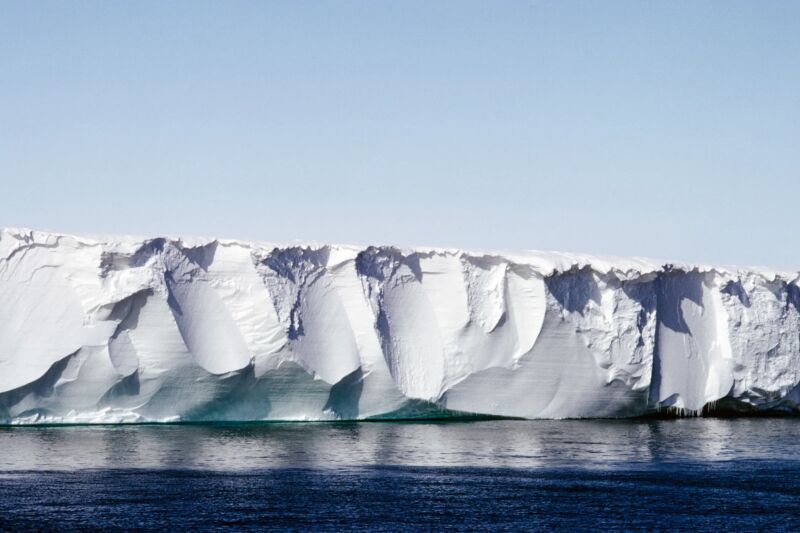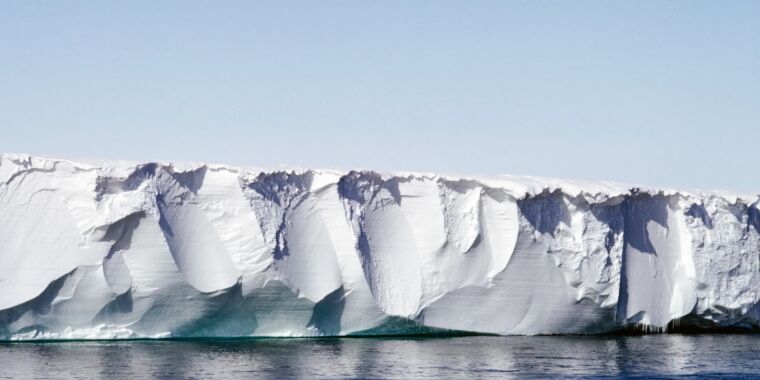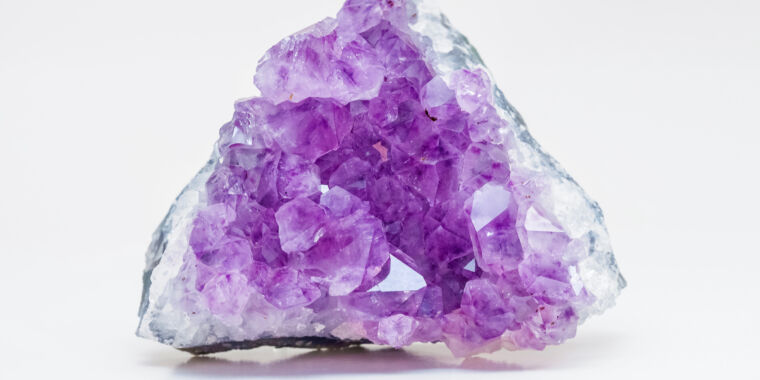
De Agostini Picture Library | Getty Images
Lake Whillans is a strange body of water, starting with the fact that there is liquid to fill it at all. Though buried under more than 2,000 feet of Antarctic ice, its temperatures climb to just shy of 0° Celsius, thanks to a combination of geothermal warmth, intense friction from ice scraping rock, and that thick glacial blanket protecting it from the polar air. Given the immense pressure down there, that’s just balmy enough to keep the lake’s water watery. Stranger still, Lake Whillans is also teeming with life. One survey a decade ago found thousands of varieties of microscopic critters, thought to be feeding on nutrients left by seawater that sloshed into the basin several millennia ago, when the glaciers last pulled back.
More recently, Chloe Gustafson, a geophysicist at Scripps Institution of Oceanography, arrived on the remote stretch of ice above Lake Whillans with a different mystery in mind: What’s happening underneath that lake? Antarctic researchers had long suspected the plumbing below the glacier went much deeper than they could see. Any groundwater beneath the lake would have implications for how the ice up above moves oceanward, and thus for how quickly it might contribute to rising seas. But they couldn’t definitively prove what groundwater was there. It was too deep, too ice-covered to map with the traditional tools of glaciology, like bouncing radar signals off the ice or setting off explosives and listening to the shockwaves.

In a study published in the journal Science, Gustafson’s team offers a long-awaited schematic of the watery world underneath the ice. A vast reservoir of groundwater reaches more than a kilometer below subglacial water features like Lake Whillans, containing 10 times as much water. To see it, the researchers turned to a technique called magnetotellurics, or MT, which harnesses natural variations in Earth’s electromagnetic field to sketch out a broad picture of the sediment below. They expect that similar groundwater systems underpin other areas where the ice is flowing fast—so-called ice streams that account for about 90 percent of the ice making its way from the continent’s interior to the ocean. “This is one piece of the puzzle asking why this ice flows the way it does,” says Gustafson. “So it’s really important for understanding what’s going to happen to Antarctica.”
Scientists have long understood that subglacial water plays a role in how the ice above it moves. One factor is how it alters the sediment below, creating ruts and planes on the terrain. Another is by lubricating the ground, which allows the ice to slide more quickly. “If you have water on a Slip ’n Slide, you’re going to slide pretty quickly,” Gustafson says. “If you don’t have water, you’re not going to get very far.” Making sense of that subglacial hydrology is especially important for researchers racing to model particularly precarious regions of ice, like the Thwaites Glacier, a few hundred miles away from Whillans. In January, a group of researchers reported that Thwaites—the so-called Doomsday Glacier, which holds back enough ice to raise global sea levels by two feet—could collapse within five years.








